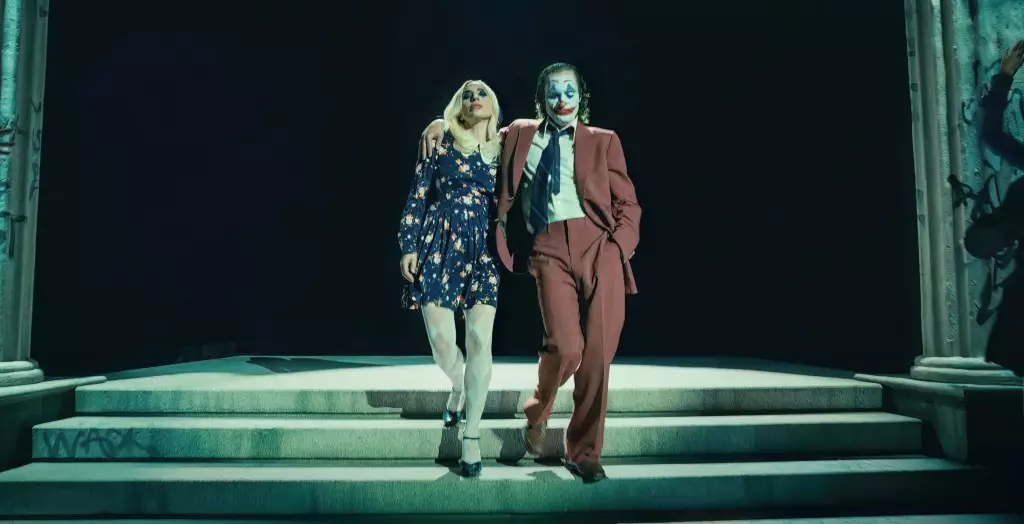The release of “Joker: Folie à Deux,” helmed by director Todd Phillips and featuring esteemed actors Joaquin Phoenix and Lady Gaga, has sparked considerable discussion within the film industry. With its opening weekend grossing only $121.1 million globally and $81.1 million from 76 international markets, the film’s performance fell short of expectations. In contrast, its predecessor experienced a robust opening that contributed to its eventual status as a billion-dollar box office hit. This article dives deep into the factors contributing to the lukewarm reception of the sequel, highlighting critical responses, audience reception, and potential strategic missteps.
The Underwhelming Reception
From the onset, the critical reception of “Joker: Folie à Deux” was suspect, with many industry experts noting a disappointing trend in both critic and audience scores. Compounded by a muted social media buzz, the early indicators suggested that audiences found the film lacking. In a stark contrast to the original “Joker,” which received recognition at prestigious film festivals and garnered widespread praise, the sequel’s premiere at the Venice Film Festival reflected a disheartening deviation. Critics and viewers alike bestowed low ratings upon the film, including a troubling 2.4 audience score on platforms like Allo Ciné in France, as compared to the first film’s impressive 4.4.
This juxtaposition raises questions about whether “Folie à Deux” miscalculated its thematic depth or veered too far from the compelling elements that resonated with audiences in 2019. The narrative choices and artistic direction may not have yielded the anticipated connection with viewers, leading to a decline in enthusiasm.
To better understand the factors at play, it is crucial to analyze the differences between the two films. Phillips’ original “Joker” debuted at $139 million overseas, a figure buoyed by its Golden Lion award and a gripping storyline that captivated audiences worldwide. The film’s ability to navigate dark psychological themes while remaining relatable contributed significantly to its box office triumph. Elements such as character development and emotional resonance placed the film not just in the realm of entertainment, but also as an artistic statement.
Conversely, “Folie à Deux” seems to lack that same sense of connection. Despite a powerful cast, audience reviews indicate that many felt disconnected from the sequel’s narrative arc. The daring choice to integrate musical elements, led by Lady Gaga, appears to have been met with skepticism rather than excitement, further complicating the film’s overall appeal.
Timing is another critical aspect to consider. “Joker: Folie à Deux” was positioned to launch amidst a crowded cinematic landscape. While box office figures showed strong international performance in certain territories, the overall reception indicates that competitors might have dramatically affected its turnout. Other franchise films, such as the latest installments of beloved series, often dominate audience attention; thus even a successful opening can be overshadowed.
Moreover, the film’s timing crucially coincided with holiday releases in markets such as Korea and Mexico, leading to projections that may not have panned out as intended. For instance, its underwhelming performance in Korea—grossing only $3.7 million over a six-day framework that included two holidays—illustrates the struggle to assert dominance in a competitive marketplace.
As the industry turns its gaze to upcoming releases, including the much-anticipated launches in Japan and China, the question looms: Can “Folie à Deux” salvage its box office performance? While the initial reception may deem the film a disappointment, there remains potential for recovery with the right marketing strategy and audience re-engagement efforts. The historical trajectory of many films indicates that initial reception does not always dictate long-term success.
Film executives and creatives should consider analyzing and responding to the perceived pitfalls that led to the current situation. Finding a balance between artistic ambition and audience connection is essential for future projects aimed at a similar demographic.
“Joker: Folie à Deux” presents a compelling case study in the complexities of contemporary cinema. While it brought forth a highly talented cast and novel ideas, several missteps in execution and timing contributed to its lackluster performance. As the industry continues to evolve, the lessons gleaned from this sequel’s performance will undoubtedly shape future filmmaking endeavors, encouraging a delicate balance between creativity and audience expectations. In an era where filmgoers have more choices than ever, understanding the intricacies of viewer connection remains paramount to achieving box office success.

